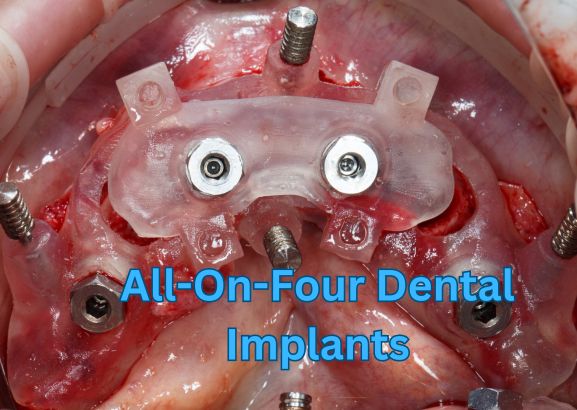Why Do Dental Implants Take So Long?
Last Updated on 6 months by DR. ALBIN SIPES
Dental implants are an increasingly popular option for replacing missing or damaged teeth. They offer a long-lasting and natural-looking solution, making them a desirable choice for many people. However, one aspect that may deter individuals from getting dental implants is the length of time it takes to complete the process.
So why do dental implants take so long? In this article, we will explore the reasons behind the lengthy process and why it is worth the wait.
Understanding Dental Implants
Dental implants have become increasingly popular in recent years as a long-term solution to missing teeth. Unlike dentures, dental implants are surgically implanted into the jawbone and can last for decades with proper care. They are made of titanium and seamlessly fuse with the natural bone. With dental implants, patients can regain confidence in their smile and enjoy a full range of foods without worrying about loose or shifting dentures. However, it is vital to understand the process of getting dental implants and the potential risks involved. A consultation with a trusted dental professional can help determine if implants are the right choice for you.
Typical steps involved in the dental implant procedure
1. Consultation and planning: The process begins with a thorough consultation where the dentist examines your oral health, discusses your treatment goals, and creates a personalized treatment plan.
2. Tooth extraction (if necessary): If the tooth that needs to be replaced is still present, it may need to be extracted prior to the implant placement. This ensures a healthy foundation for the dental implant.
3. Bone grafting (if necessary): In cases where the jawbone lacks sufficient volume or density to support the implant, a bone grafting procedure may be required. This involves adding bone graft material to enhance the strength and stability of the implant site.
4. Implant placement: The dental implant, which is a small titanium post, is surgically placed into the jawbone. This acts as a replacement for the tooth root and provides a sturdy foundation for the artificial tooth.
5. Osseointegration: Over several months, the implant fuses with the surrounding bone through a process called osseointegration. This integration ensures the implant becomes a permanent part of the jawbone, providing stability and support.
6. Abutment placement: Once osseointegration is complete, an abutment is attached to the implant. The abutment acts as a connector between the implant and the final restoration.
7. Restoration placement: Finally, a custom-made dental crown, bridge, or denture is attached to the abutment, completing the dental implant procedure. The restoration is designed to match the shape, size, and color of your natural teeth, resulting in a seamless and aesthetically pleasing smile.
Please note that the specific steps and timeline may vary depending on individual cases and the recommendations of the dental professional.
A critical aspect of the process is to emphasize the significance of each step. By doing so, it helps to provide a clear understanding of the purpose and impact of every action taken. This attention to detail ensures that every step is noticed and appreciated, ultimately leading to a more thorough and effective outcome.
Factors Influencing the Timeframe
Several factors can influence the timeframe of a project. These factors include the-
- The complexity of the task
- The availability of resources
- The level of expertise required
and any potential obstacles or challenges that may arise along the way. Considering these factors is crucial in order to accurately estimate the time needed to complete a project and ensure its successful execution.
How these factors contribute to the length of the implant process
These factors contribute to the length of the implant process by ensuring that each step is given sufficient time and attention. This leads to a successful outcome and long-term stability for dental implants. By addressing these factors in a personalized treatment plan, dental professionals can provide patients with a clear understanding of the treatment timeline and promote satisfaction.
Rushing the process can lead to complications and compromise treatment success. By taking the necessary time for each step, dental professionals can ensure a thorough and effective outcome, resulting in a healthy and functional smile for patients. Trust the expertise of your dental professional and allow adequate time for each stage of the implant process. In the end, it will be worth the wait for a beautiful and long-lasting smile.
With proper care, dental implants can last a lifetime, making them a valuable treatment option. Communicate openly and ask any questions or concerns you may have about the treatment process. Your dental professional is there to support and guide you towards a healthy and confident smile. Trust the process and enjoy the journey towards a beautiful new smile.
Benefits of a Thorough Process
Although it’s an extensive and time-consuming process, it offers numerous benefits that make it worth the wait. These benefits include:
- Long-term success
- Better aesthetics and functionality
- Improved integration
- Patient Satisfaction
- Overall oral health
How the time investment leads to better outcomes and longevity
Dental implants require a significant time investment, encompassing multiple appointments and months of healing. However, this meticulous process yields better outcomes and longevity. With decades of durability, implants save you time, money, and discomfort in the long run, ensuring a beautiful, functional smile.
Shortening the Timeline
While a thorough approach is crucial for successful outcomes, there are ways to shorten the timeline of dental implant treatment. These include:
- Pre-treatment planning
- Collaboration between the dental team and laboratory
- Proper oral hygiene
Advancements in dental implant technology
Dental implants have come a long way in recent years, thanks to advancements in technology. With the use of 3D imaging and computer-guided designing, implants can be placed with greater precision and accuracy. New materials, such as zirconia, have been introduced as an alternative to titanium. It allows for a more natural-looking result. Additionally, some implants can even stimulate bone growth, promoting long-term success and stability. Patients who once may not have been candidates for implants due to a lack of bone density or other factors can now benefit from these new developments in the field. As these advancements continue to be made, the future of dental implants looks brighter than ever.
Strategies To Potentially Reduce The Overall Duration
Strategies to reduce implant procedure duration include immediate load implants, computer-guided placement, and improved materials/techniques. These strategies optimize treatment timelines for faster, more efficient dental solutions.
In conclusion, it is vital to summarize the key points discussed in this report. By carefully analyzing the data and conducting thorough research, we have gained valuable insights into the topic at hand. These findings provide a solid foundation for future studies and can serve as a basis for further exploration in this field.


